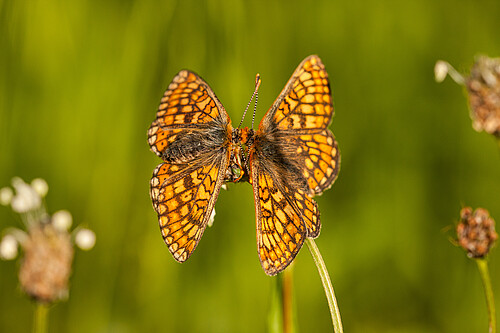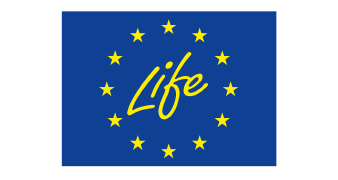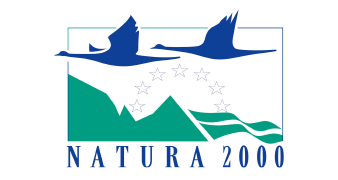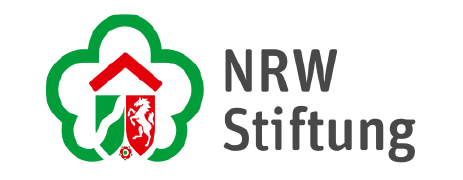Project measures
We have a lot to do!
A major focus of the LIFE project is the implementation of nature conservation measures to promote valuable species and habitats occurring in the Special Protected Area “Wälder und Wiesen bei Burbach und Neunkirchen”. As part of the project, numerous measures are being implemented either in the forests or in the grasslands of the southern Siegerland. This for example also includes the re-introduction of the currently locally extinct Marsh Fritillary.
Project goals
Conservation of old-growth forests (C1)
Many animal and plant species depend on old-growth forests rich in deadwood. This action serves the long-term conservation of old-growth stands, the promotion of valuable FFH (Flora-Fauna-Habitat) habitat types such as 9110, 9180, and 91E0*, as well as the associated target species in forest ecosystems. In addition, together with Actions C2 and C3, it aims to prevent a future age gap in species-rich oak stands and in the above-mentioned habitat types within the project area. The action also contributes to the conservation of beech forests, for which Germany holds global responsibility.
| Target area | 50 ha |
|---|---|
| Measures: | Conservation of old-growth stands, protection of habitat and cavity trees, establishment of eyrie protection zones |
| Target species: | Black woodpecker, middle spotted woodpecker, grey-headed woodpecker, and red kite |
→ Our PROGRESS ON ACTIONS in detail

Conversion of spruce tree plantations into deciduous forests (C2)
To prevent afforestation with non-native tree species and to promote forest conversion toward native deciduous woodland, Action C2 involves planting broadleaf species on former spruce sites. This contributes to the enhancement, connection, and expansion of the Natura 2000 valuable FFH (Flora-Fauna-Habitat) habitat types 9110, 9180, and 91E0*.
| Target area: | 50 ha |
|---|---|
| Measures: | Initial plantings with deciduous trees |
| Target species: | Black woodpecker, middle spotted woodpecker, grey-headed woodpecker, and red kite |
→ Our PROGRESS ON ACTIONS in detail

Establishment of coppice-with-standards forestry (C3)
The majority of deciduous forest areas, accounting for 14% of the total forest area within the project region, is covered by oak and oak-birch woodlands. These stands have largely developed from former coppice systems, specifically from traditional “Hauberg” management. Depending on the timing of the last coppicing cycle, these so-called "D stands" now range in age from 50 to 130 years. The greatest threat to oak-dominated forests and the oak timber stock comes from silvicultural practices that do not consider natural regeneration or re-establishment of oak (Quercus petraea and Q. robur). A significant portion of oak stands in the Siegerland region has already been converted, historically underplanted with Norway spruce (Picea abies), and more recently with Douglas fir (Pseudotsuga menziesii). New oak establishment or oak regeneration practices, whether through coppice regrowth or initial planting, are currently rarely implemented. From an ecological standpoint, oak-dominated forests are of particular importance, especially for the conservation of the middle spotted woodpecker (Dendrocopos medius). Promoting both ancient oaks and new oak generations plays a crucial role in maintaining suitable habitats.
The long-term preservation of oak forests, particularly their regeneration to avoid future age gaps, depends on careful silvicultural planning and management. The project aims to apply a forest management approach that resembles traditional Hauberg methods, complemented by standard trees and initial planting measures. In addition to specifically promoting oak as a light-demanding species, tree species diversity will be increased by integrating appropriate companion species.
Silvicultural control through light and shade dynamics (e.g., group selection cutting) supports the establishment of these companion species in the sub-canopy layer and enhances structural diversity within the stand. The resulting light gaps significantly increase biological productivity, which can be attributed to enhanced sunlight exposure and edge effects. These open forest structures lead to a greater variety of habitats and an increased availability of arthropods.
The long-term objective is to develop vertically diverse stands with mature oaks in the upper canopy. In the future, selective understorey use, especially of companion species, may be initiated for firewood harvesting, contributing to sustainable forest management.
→ Our PROGRESS ON ACTIONS in detail

Conversion of spruce tree plantations into grasslands (C4)
In the Special Protection Area (SPA), several sites containing valuable extensively managed grasslands (particularly Nardus- and Molina grasslands), were afforested with spruce in the past. Within the project, these sites, which are now almost entirely covered with spruce and closely interwoven with existing Natura 2000 (FFH) habitats, will be restored as open habitats.
In combination with Action C2.1 (establishment of the FFH habitat type alluvial forest 91E0*), a biotope network covering 35 hectares will be created. This network is further supported by strong ecological connectivity with adjacent areas outside the project boundary, especially within the Westerwald SPA.
| Target area: | 35 ha |
|---|---|
| Measures: | Removal of spruce stands and restoration of extensively managed grasslands (particularly Natura 2000 FFH habitat types 6230*, 6410, 6510, 6520) |
| Target species: | Whinchat, Violet Copper, Marsh Fritillary |
→ Our PROGRESS ON ACTIONS in detail
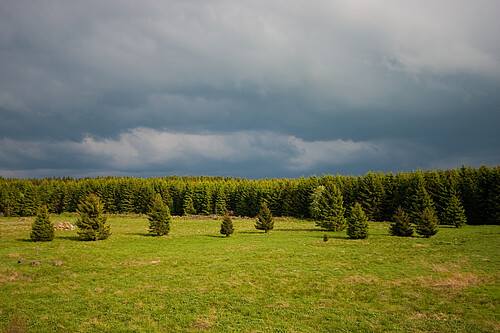
Optimization and conservation grasslands (C5)
A total area of 46 hectares of various grassland habitats (Natura 2000 habitat types 6230*, 6410, 6510, 6520) will be brought into a favourable conservation status to support insect populations and ground-nesting birds. On an additional 40 hectares, insect-rich grasslands will be established through the use of alternative mowing techniques.
These measures are directly aligned with all grassland areas within the project site (320 hectares), which are to be permanently preserved through land acquisition, an adapted management plan, and agri-environmental contracts as part of After-LIFE conservation actions. Together with Action C4, a total of 355 hectares of species-rich grasslands can be created, optimised, and secured in the long term.
The enhancement measures include de-bushing, sectoral mowing, green hay transfer, supplementary seeding, and the removal of undesirable vegetation, such as invasive species.
The goal of this action is especially to improve habitats for the violet copper (Lycaena helle) and the marsh fritillary (Euphydryas aurinia).
| Target area: | 86 ha |
|---|---|
| Measures: | Revitalization of Nardus grasslands , de-bushing, selective mowing, green hay transfer, supplementary seeding, removal of invasive plants, and introduction of ecological mowing techniques. |
| Target species: | Whinchat, Violet Copper, Marsh Fritillary |
→ Our PROGRESS ON ACTIONS in detail
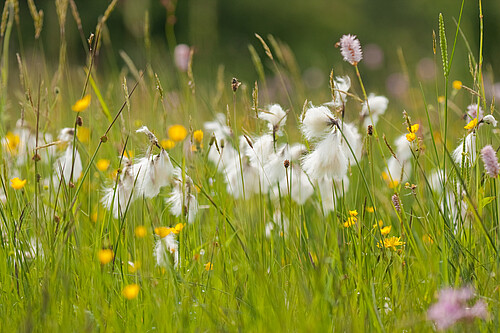
Re-introduction of Euphydryas aurinia (C6)
Since 2014, Euphydryas aurinia (marsh fritillary) has not been detected within the project area and is currently classified as regionally extinct in the district of Siegen-Wittgenstein. As part of the project, a reintroduction program will be undertaken with the objective of establishing a viable, self-sustaining population within ecologically enhanced habitat areas specifically optimized for the species’ ecological requirements. To support this goal, a targeted habitat management regime will be implemented and maintained beyond the project duration through the After-LIFE phase. The reintroduction will be facilitated via an ex-situ breeding program. Founder individuals for captive propagation will be sourced from genetically and demographically stable donor populations located in Rhineland-Palatinate, the Rhön, and the Eifel regions, ensuring genetic diversity and compatibility with the reintroduction site.
→ Our PROGRESS ON ACTIONS in detail
